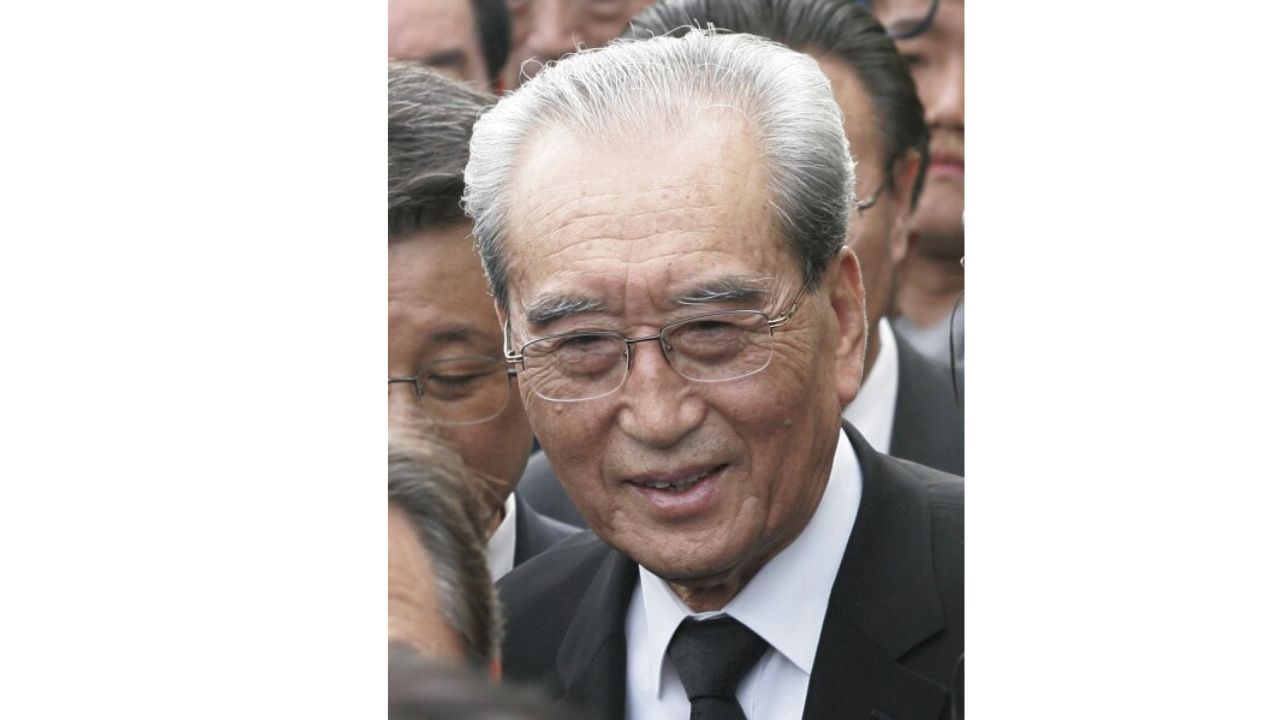Kim Ki Nam Dies at 94: Propaganda Chief is No More
Kim Ki Nam, the former chief of propaganda for North Korea, passed away, official media said on Wednesday. He was ninety-four years old. According to the official KCNA, he was treated for “multiple organ dysfunction” in 2022 and passed away as a result of his age.

Kim Ki Nam Cause of Death:
Kim Ki Nam, the architect behind the propaganda who helped create the cult of personality around the family dynasty that has dominated North Korea since the country’s creation during the Cold War, passed away at the age of ninety-four.
Kim passed away on Tuesday, according to the official Korean Central News Agency. The article stated that Kim had been ill for several years and had dedicated his life to the “sacred struggle for defending and deepening the ideological purity of our revolution.”
Kim Ki Nam, Who Was He?
According to the official biography by KCNA, Kim overcame a difficult upbringing to work at the Workers’ Party of Korea Central Committee starting in 1956 and gain the confidence of state founder Kim Il Sung. According to KCNA, he dedicated almost 60 years to strengthening the party’s doctrinal base and developing talent that will aid the government.
Being one of the leading powers behind the power, Kim was crucial in crafting the nation’s message when the founder’s son, Kim Jong Il, took over as leader and assisted in the ascension of Kim Jong Un, the current leader.
“From the 1960s onwards, Kim Ki Nam was a top-tier career propagandist,” according to Rachel Minyoung Lee, a senior fellow at the Stimson Center’s 38 North Program in the United States.
Before he retired from the propaganda scene in early 2019, Lee, an analyst for the CIA’s Open Source Enterprise for nearly two decades, said, “Kim Jong Un also trusted and relied on this propaganda veteran from his grandfather’s, and subsequently his father’s time, by keeping him in key propaganda positions for years.”
According to the North Korea Leadership Watch website, in addition to serving as the party secretary of the Information and Publicity Department, also referred to as the Propaganda and Agitation Department, Kim Ki Nam was appointed editor-in-chief of Rodong Sinmun, the state newspaper, in 1976 and rose to the position of chairman of the nation’s journalist association.
The Ground of Instruction:
He had tremendous authority to control the state’s narrative daily because of his leadership position in the party’s propaganda machinery and control over the media. Furthermore, he was instrumental in establishing Juche, Kim Il Sung’s long-standing ethic of self-reliance, and Songun, Kim Jong Il’s doctrine of military supremacy.
The Kim family dynasty has trained in the domain of publicity and agitation. It was founded before Kim Jong Il came to power. Kim Yo Jong, the current leader’s sister and a significant figure in foreign propaganda, holds a prominent place within the organization.
Just months before Kim Jong Un made his formal debut, in May 2010, Kim Jong Il reappointed Kim Ki Nam as department director, presumably to facilitate a seamless handover of power, according to Lee.
The fact that North Korea is the only significant family dynasty established during the Cold War to maintain uninterrupted power since the 1940s may be the best indicator of his impact.
It has achieved this, in part, by changing the emphasis of its messaging over time. At first, North Korea portrayed itself as more affluent and well-run than South Korea. However, the regime cultivated an image as the guardian of the Korean people as its neighbor grew much wealthier and the Soviet Union, Pyongyang’s principal sponsor, fell apart in the early 1990s.
It blamed succeeding American presidents for using financial pressure and sanctions to stifle the country’s economic progress while justifying economic hardships as a necessary sacrifice to create nuclear weapons that could avert an American invasion. By abandoning its nuclear weapons development, which the West has faulted for being an unnecessary investment that has left the nation among the poorest in the world, the U.S. and its allies have provided North Korea the opportunity to participate in the growing economies in the area.
Disguising Responsibility:
The leader frequently appears in official propaganda when they tour companies, farms, and building sites. This made it easier to place the responsibility for economic mismanagement on cadres who disregarded leaders’ directives rather than the Kim family, who was shown as being extremely worried about even the tiniest elements of the state.
Kim Ki Nam is well-known abroad as well. Following the death of former President Kim Dae-jung in 2009, he headed a mission to South Korea, where he met with Lee Myung-bak. In 2000, Kim Dae-Jung visited Pyongyang to meet with Kim Jong Il, igniting hopes for peace on the split peninsula.
Kim Ki Nam was last mentioned in state media to have made a public appearance in 2021 when he stood on a platform with other notable officials to observe a paramilitary force march in honor of the 73rd anniversary of the nation’s creation.
This year, Kim Jong Un, the country’s current leader, removed monuments his father and grandfather had erected honoring the idea of a united peninsula and tried to remove the goal of peaceful reunification from the country’s constitution.
This has increased fears that the present leader is preparing for war, fears made worse by Kim Jong Un’s accumulating nuclear weapons and his defiance of American pleas to resume negotiations.
KCNA stated that Kim Jong Un visited Kim Ki Nam’s burial bier and expressed his “bitter grief over his passing of a veteran revolution who had remained incessantly loyal to the cause of the WPK.” Cheong Seong-chang, a scholar at the Sejong Institute, stated that Kim Ki Nam is regarded as one of the most significant people in North Korean propaganda.


Comments are closed.